While less sexy than marketing or sales, the way your SaaS company handles pricing & billing can have a similar impact on your bottom line.
In fact, pricing might even be the most important area you can tackle to drive your business’ growth.
On average, pricing and monetization is a more efficient growth lever than acquisition and retention efforts, with 89% more impact than retention, and 282% improvement over marketing or advertising.
So instead of worrying about your next ad, email, or win-back campaign, you could get a better ROI by focusing on developing a new pricing strategy.
In this article, we’ll cover five common pricing scenarios and the most suitable pricing model for each one.
1. Limited Variables for Product Delivery & Maintenance: Fixed-Rate or Flat-Rate Pricing
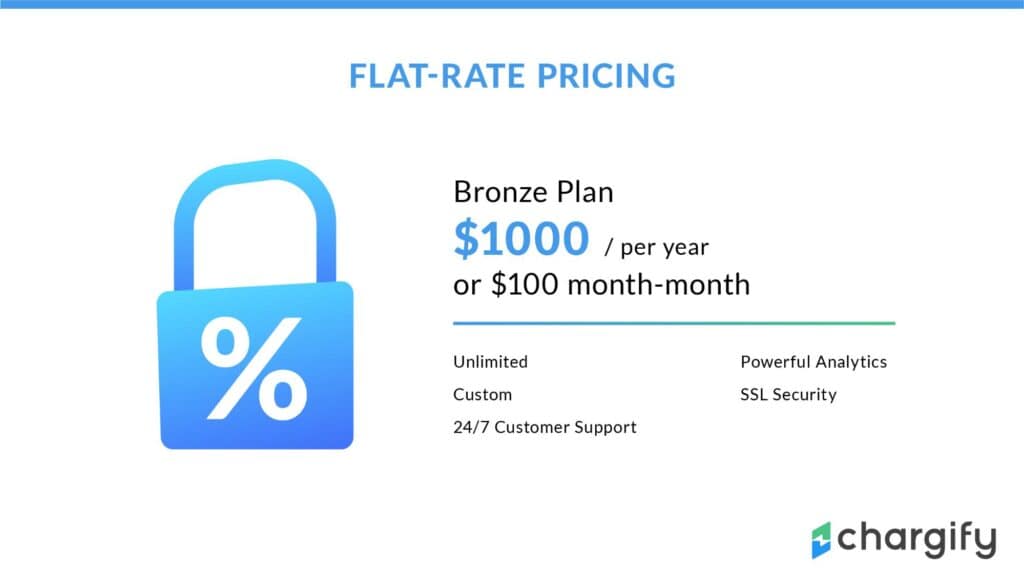
If you have a software product with a limited variation in data usage and overhead costs from user to user, a single, fixed-rate subscription may be the best option for your company.
If your company’s primary product or service is partially or fully self-hosted by your clients, that typically means your post-sale expenses will be negligible.
Some examples include intranet software, web hosting control panels, or plugins installed through a third-party platform (like a CMS or e-commerce solution).
In particular, extensions, templates, and similar products lend themselves to this simple pricing model.
There are very few variables in product delivery (the majority of your users will successfully install your product on their own).
And customers use your software through an already-installed service on a running, externally-maintained server so you don’t need to assist with that.
Finally, with the limited scope of the product you also limit the area of potential issues, so there is no need for complex pricing models.
Benefits of Fixed-Rate Subscriptions
While many companies will consider this pricing approach too simple for 2020, there are several benefits of fixed-rate subscriptions.
The benefits of this pricing model:
- It’s easy for potential customers to understand.
- Cost-savings can be a selling argument over competitors who use per-user pricing models.
- It’s extremely easy to implement and test.
- It’s easy to forecast and measure revenue, customer lifetime value, and churn.
- It offers no stress refunds and cancellations.
Drawbacks of Fixed-Rate Subscriptions
A single subscription with a fixed price might be easy to put in place ( and for your customers to comprehend), but it’s not without its drawbacks. The drawbacks of this pricing model:
- You could lose potential customers that have different price expectations.
- Suboptimal monetization. (Not maximizing high-value customer relationships.)
- There is a mismatch between customer value & effort/usage.
- You can’t provide the same level of service as competitors targeting higher-quality clients. (Higher prices = higher margins = more money to spend on maintaining VIP SLAs.)
Real Examples
Elegant Themes: WordPress theme & Plugin developer Elegant Themes follow the fixed-rate subscription model, and only offers a single annual subscription plan at $89/year.
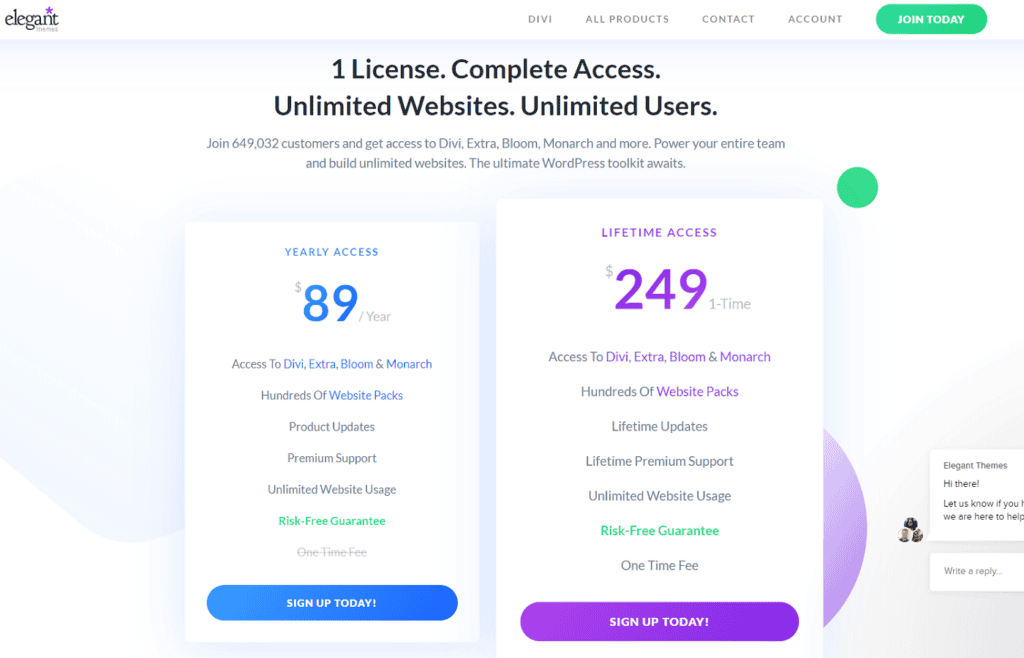
Elegant Themes also offers a one-time fee for lifetime access, which has everything included in the yearly access plan, except you only pay once.
Basecamp:
Another, perhaps more surprising example, is the project management/collaboration SaaS, Basecamp.
Their only paid plan is a single, fixed-price subscription at $99/month. As you can see on the sales page (below), their main selling argument is that you can replace SaaS apps with per-user pricing.
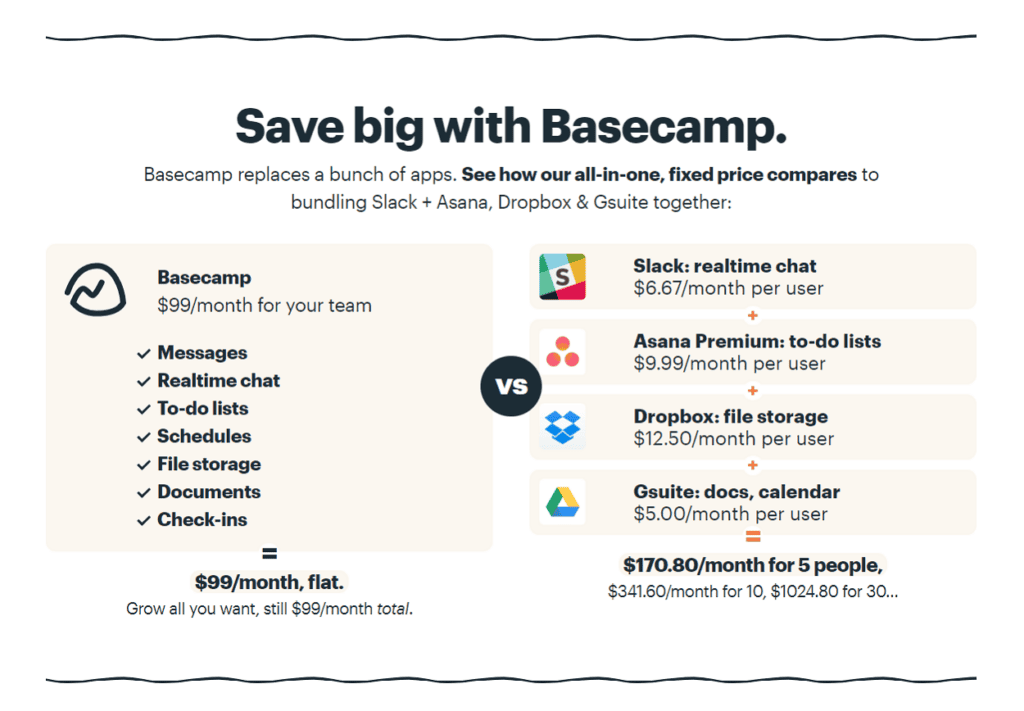
In a marketplace where it is hard to highlight value metrics (does 12,000 messages sent by your team really mean you were more productive?), their monthly plan is as much a branding statement as a pricing decision.
This Pricing Scenario Is Viable For…
Fixed pricing is viable for a narrow subset of SaaS providers, mostly those that work with add-ons for third-party software:
- SaaS companies where the main products are extensions for third-party software.
- Businesses with a very narrow target market where you can exceed expectations with a single offering & price.
- Companies in industries where SMBs/Startups feel priced out by per-user pricing or typical pricing tiers.
If your company doesn’t fit into any of the scenarios above, this pricing model may still work, but you should at least consider another pricing model before settling for the easy choice.
2. Some Variability in Product and Maintenance Demands: Tiered Pricing
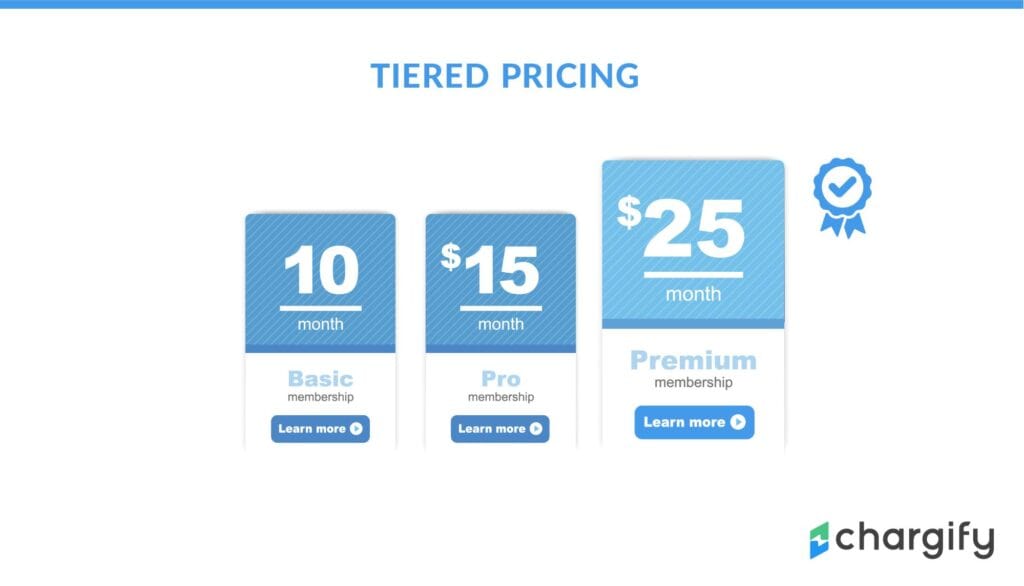
If you have a software product where there is some variation in product expectations and overhead from user to user, for example, marketing, analytics, and reporting tools, tiered pricing can be a good option.
Typically SaaS solutions that offer or consider tiered pricing have (or think they have) a relatively broad target market, where potential customers could have moderately different needs and demands.
Tiered pricing is like an option to offer different iterations of your product/service. You can sell one package that’s suitable for solopreneurs/freelancers, one version that’s suitable for SMBs, and one version that’s perfect for enterprises.
Packages can vary a lot in features, or the only differentiating factor can be a value metric, like the maximum number of users, page views, or bandwidth.
Benefits of Tiered Subscriptions
Tiered subscriptions maintain most of the benefits from single, fixed-rate subscriptions. They are easy to set up and bill for, after all, it’s just a few more options of static billing. There’s no need to generate invoices based on different usage metrics dynamically.
The benefits of this pricing model:
- It’s very easy to implement.
- It’s easy to forecast revenue.
- Potential customers can choose the right plan for their situation.
- Your products appeal to a broader market.
- No stress refunds/cancellations.
- Straightforward upsells.
Drawbacks
Implementing tiered subscriptions can initially be a challenge, as you need to single out value metrics and logical features to divide between different plans.
It also adds a small layer of extra complexity to your sales and billing processes, but if your business is B2B, you are probably used to negotiating custom deals anyway.
The drawbacks of this pricing model:
- Adds some complexity to sales and billing processes.
- Hard to offer competitive pricing for all users/use cases with fixed tiers alone.
- Confusing: more options can actually reduce sales in cases where your target customer base is fairly uniform.
Real Examples
Hootsuite:
HootSuite offers different tier levels that are suitable for freelancers & solopreneurs, small social media agencies, and established ad agencies and in-house marketing teams.
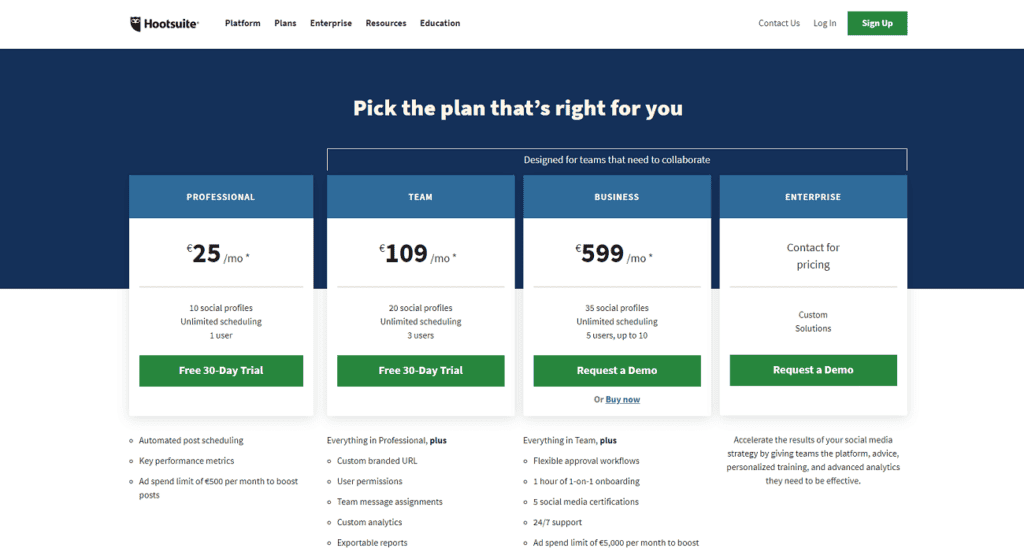
Hootsuite’s four options are in line with the SaaS average of 3.5 different subscription levels/packages.
The freelancer gets post scheduling and metrics for up to 10 different social profiles. Teams get more users, custom branding, exportable reports (to send to clients), and team messaging/assignments.
With the business plan, larger teams get customizable approval workflows (every agency has their own) and certifications.
Both the price and the added features at each level reflect the expectations and needs of each target customer. That’s key to a successful pricing strategy.
Applicable For:
Tiered pricing is one of the most widely used pricing models for a reason. It’s suitable for a wide variety of companies and products, where their biggest difference is in the features/support the different customer bases require.
- SaaS companies with a handful of different target customers that have different needs and priorities. For example, Hootsuite serves freelancers, agencies, and enterprises.
- SaaS companies that have a fairly uniform customer base with similar needs just different scales.
- Companies with predictable costs that increase with usage levels that don’t have the infrastructure in place for metered pricing.
Tiered pricing is often the first choice for up-and-coming B2B SaaS companies, but it’s not necessarily the best choice.
3. Multiple Separate but Related Product Offerings: Product Bundle/À La Carte Pricing
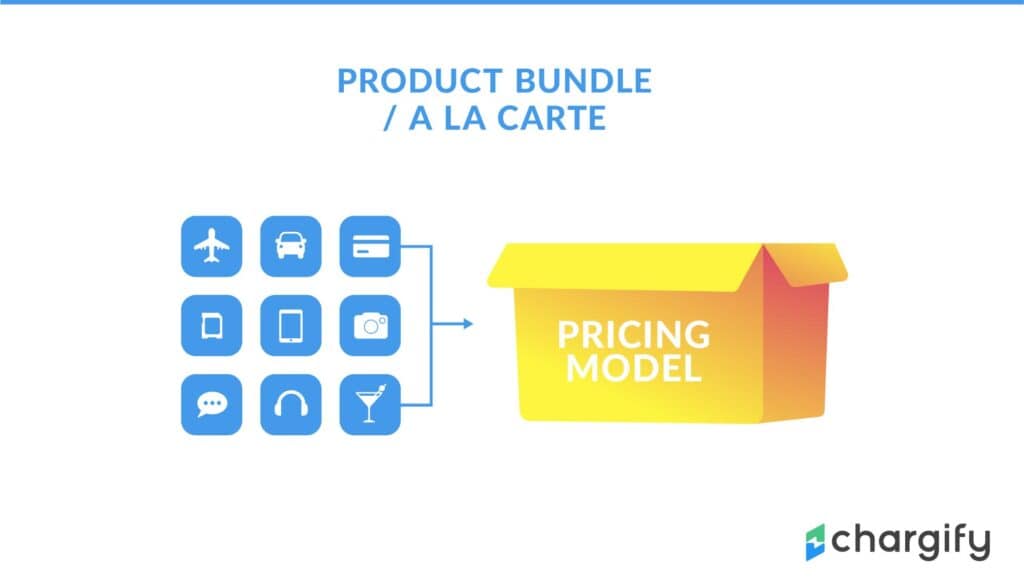
If your company has developed various separate SaaS products or offerings, but they serve the same target market, one strategy is to bundle the products together and create several different tiers based on which products the user will gain access to.
For many companies in this position, a mix of product bundles and à la carte pricing will produce the best result. (The combination is more common than just one of the options alone.)
With a mixed strategy, you can create and offer product bundle subscriptions while maintaining your original, single-product/feature subscriptions. (No messy transitions for existing customers.)
Benefits of Bundle Subscriptions
Bundling products can help you remain competitive when other companies offer complete vertical SaaS solutions to solve a specific problem for a specific market segment arises.
It is a choice tactic for companies that initially followed the licensing model and has proved useful for Microsoft, Adobe, and many more.
The benefits of this pricing model:
- Customers can pick plans with only the products they need.
- Highlights the value of your overall platform.
- Great cross-selling potential.
Drawbacks
If you don’t combine your separate products, you still need to maintain separate marketing/sales activities. With multiple bundles targeting wildly different personas, that challenge mostly remains in place. The drawbacks of this pricing model:
- It can be difficult to create “one-size-fits-all” bundles.
- It doesn’t maximize the value of highly active customers.
- Marketing/sales efforts can get more complicated with multiple core offerings.
Real Examples
Adobe Creative Cloud:
Adobe Creative Cloud offers two bundles: “Photography” and “All Apps.”
Photography includes Adobe Photoshop and Lightroom, and the all Apps Bundle predictably consists of all of Adobe’s Creative Cloud apps.
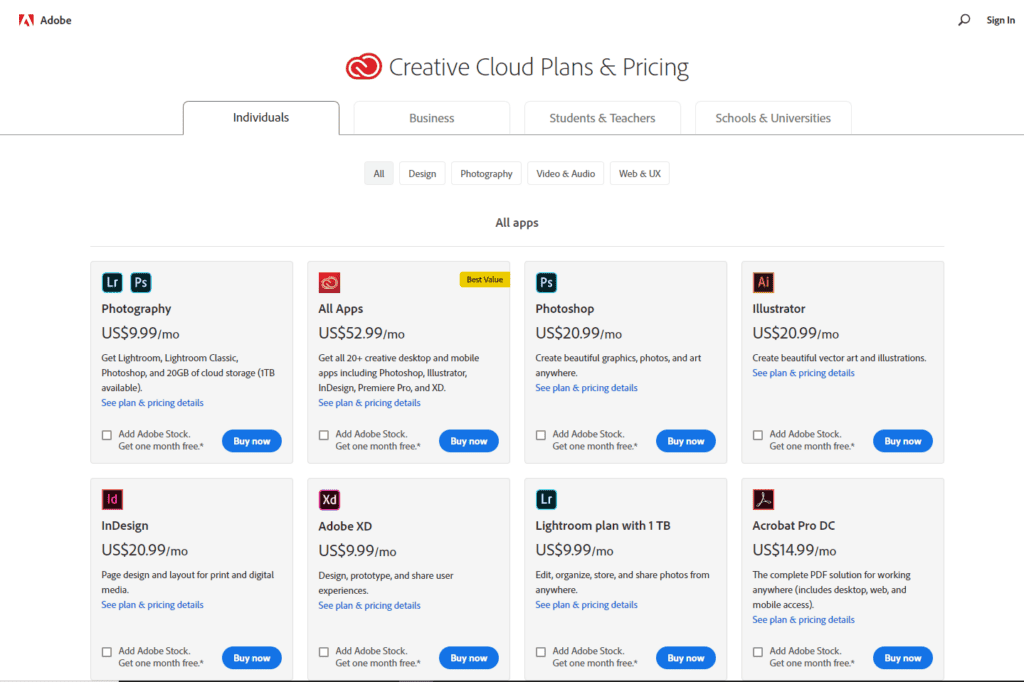
It also has an à la carte option to bundle different products together on your own or only choose a single product.
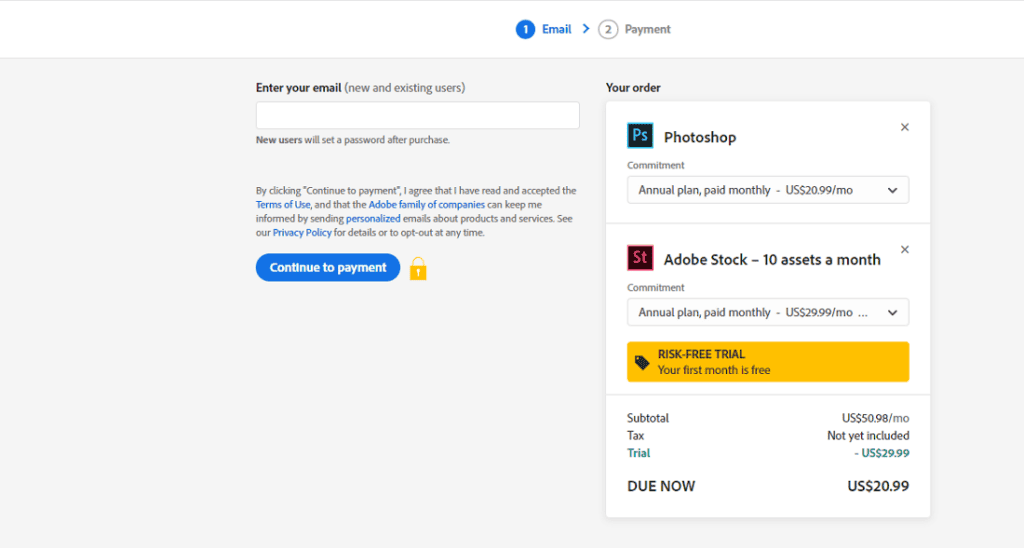
Microsoft Office 365:
The primary pricing model of Microsoft Office 365 is also product-bundle pricing, as it only offers three separate, pre-made bundles of its core products to business customers.
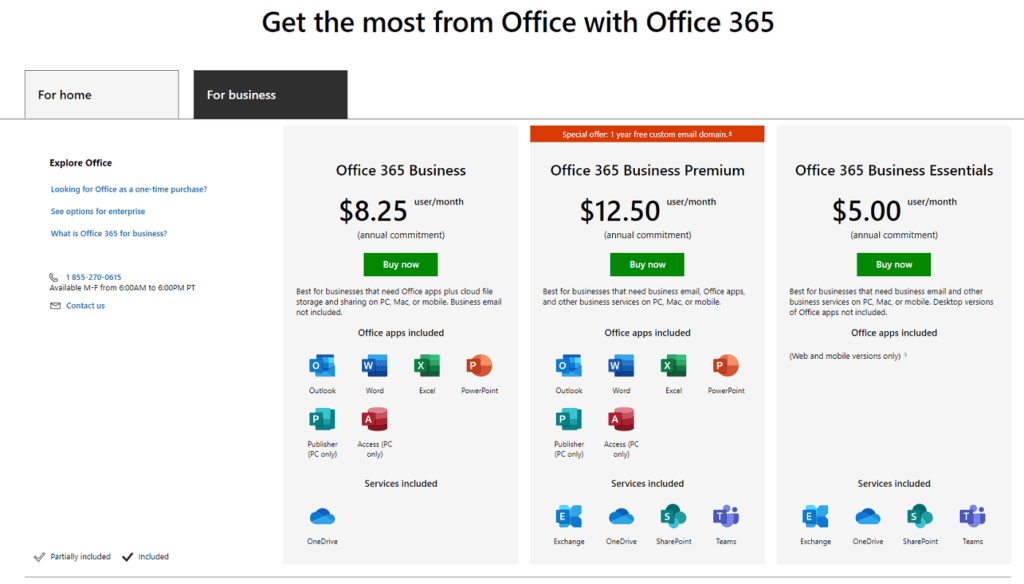
The essentials bundle only includes OneDrive, Exchange, SharePoint, and Teams. These are Microsoft’s enterprise productivity and collaboration tools.
The regular business bundle includes all the pre-existing Microsoft Office apps, including Outlook, Excel, Word, and PowerPoint.
Applicable For:
Unless you have multiple existing products, acquired a SaaS company with a relevant offering, or have a very extensive enterprise solution you want to, bundle pricing probably isn’t the choice for you.
- SaaS companies with multiple separate products that have a similar target market.
- Enterprise-focused companies that have a complex, expensive solution, but want to reach a new market with less extensive bundled features.
Product bundle pricing can be a powerful solution in very specific scenarios, but it’s not something you should force.
4. Running Costs Closely Tied to Product Usage: Usage-Based Pricing
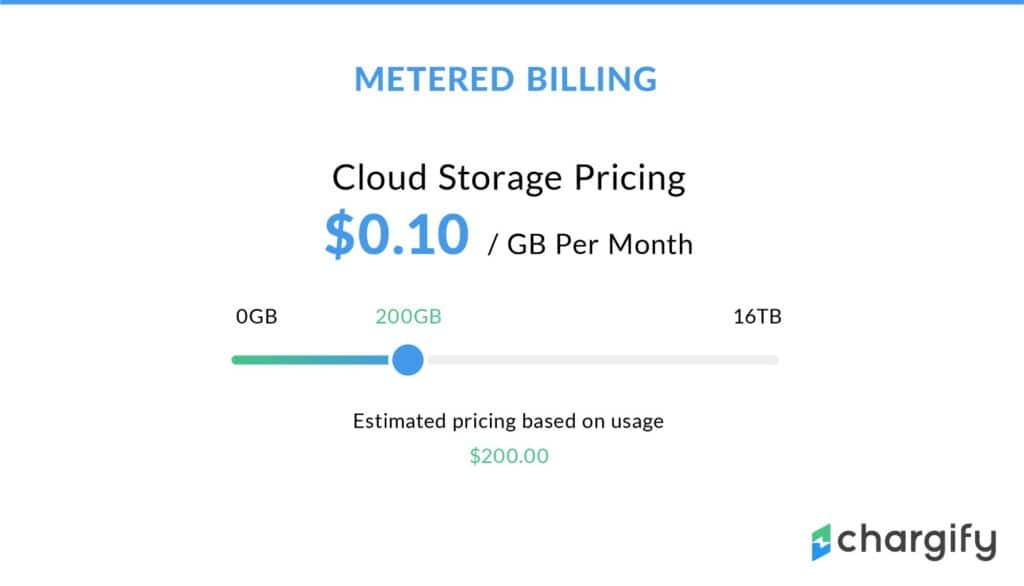
In SaaS industries where servers and bandwidth usage makes up the brunt of the running costs, like app deployment/email marketing/analytics and others, basing your prices entirely on usage is often the norm.
But usage-based pricing isn’t reserved only for that narrow section of SaaS companies. Highlighting value metrics is a good way to convince your prospects and customers that your product is worth its price.
Prospects and users get more involved in how they use your product, and it can lead to lower churn rates and higher LTV.
Note: Though focused on value metrics, usage-based pricing is not to be confused with value-based pricing pages for SaaS.
Benefits of Usage-Based Pricing
Partial or 100% usage-based/metered pricing can become an essential differentiator in markets where expensive fixed plans are the norm. It also ties the costs directly to usage, so heavy users will pay for the load that they put on your system.
Plus, it creates an incentive for the company to make a better, more usable product.
The benefits of this pricing model:
- The perfect balance between customer value and usage/demands on your infrastructure.
- It is seen as an affordable choice in expensive marketplaces.
- Revenue grows organically along with your customers.
- Offer instant flexibility and scalability to all users. (No plan upgrades or contacts needed to meet increased demands.)
Drawbacks
But it’s not perfect. Metered pricing has a few inherent disadvantages that turn off many companies from trying it. Implementing it can be complex, and requires working with APIs or developing a custom solution. The drawbacks of this pricing model:
- Complex implementation.
- Hard to forecast revenue.
- Smaller customers barely contribute any revenue.
- Very reliant on a handful of large customers/heavy users.
Real Examples
Google Cloud Storage:
Google Cloud Storage charges a flat per GB fee for data storage with different tiers depending on the type of drive you choose to store your data on.

And that’s just one of the many different Google Cloud services that follow the usage-based pricing model.
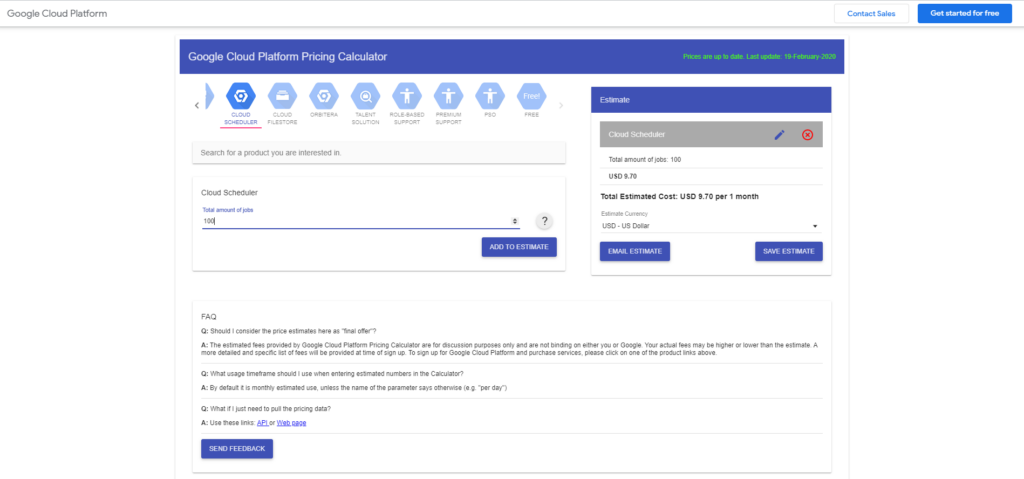
For example, with the Google Cloud Scheduler, users are billed based on the number of tasks they schedule each month.
Applicable For:
If your company has a massive server room or multiple dedicated locations, that’s a good sign you could benefit massively from metered pricing.
- SaaS companies where server costs are a significant expense and the customer understands that. (Think; cloud computing-related services, APIs, and more.)
- Companies in industries where customers have a strong focus on scalability/flexibility of the service.
But it’s not just for the giants. In fact, 38% of all SaaS companies implement some form of usage-based pricing. (That number includes users as a value metric.)
Finding the right value metric for your business, and using that to price, sell, and keep consumers using your product can help you reduce churn.
5. Complex Demands and Expenses: Hybrid Pricing
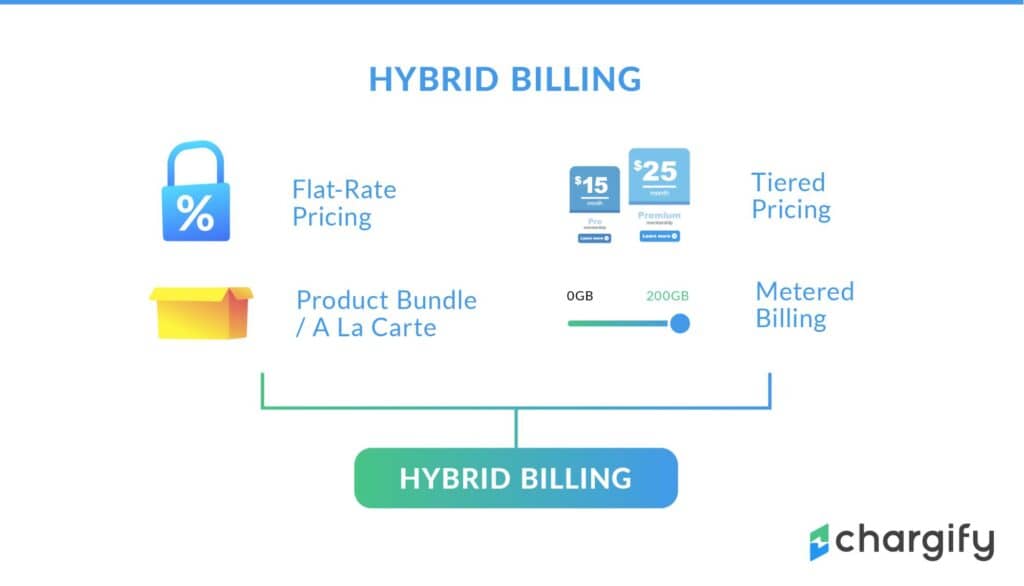
More and more SaaS companies are opening their eyes and seeing that there is no one-size-fits-all solution to their pricing problems.
By combining multiple different pricing strategies, you can develop a custom solution that fits perfectly for a complex pricing scenario with a lot of different variables.
Hybrid pricing is also a necessity if you have inherent expenses or risks associated with specific tasks customers complete using your product.
An example of this is how payment gateways/processors like Stripe or PayPal use hybrid pricing models for most transactions, because each sale costs them processing fees, and represents a risk of other expenses through payment disputes.
SMS/communication APIs rely on different carrier prices and international rates, and can’t offer a catch-all solution with a simple pricing model.
Benefits of Hybrid Pricing
It gives you the best of any of the pricing models that you choose to combine. You can give SMBs and small users predictable fixed pricing, while still giving startups/enterprises unlimited scalability, and cashing in based on their usage.
The benefits of this pricing model:
- Get the best of both worlds, stable income from fixed subscriptions, and scalable income based on customer usage
- Good scalability and flexibility.
Drawbacks
Hybrid pricing gives you the freedom to create a billing model that uniquely suits your products and customers.
The drawbacks of this pricing model:
- Hard to accurately forecast revenue from the usage-tied portion.
- Difficult to implement without sophisticated billing tools.
- Some implementations can be confusing for low-level customers/prospects.
Through creating categorized pages by customer time, for example, one page for freelancers/SMBs, and one for enterprises, you can minimize their confusion.
Real Example
CartHook:
CartHook, a post-purchase upselling extension for Shopify, has a hybrid pricing model with a flat monthly fee alongside a 0.5% cut of the revenue it generates for users.
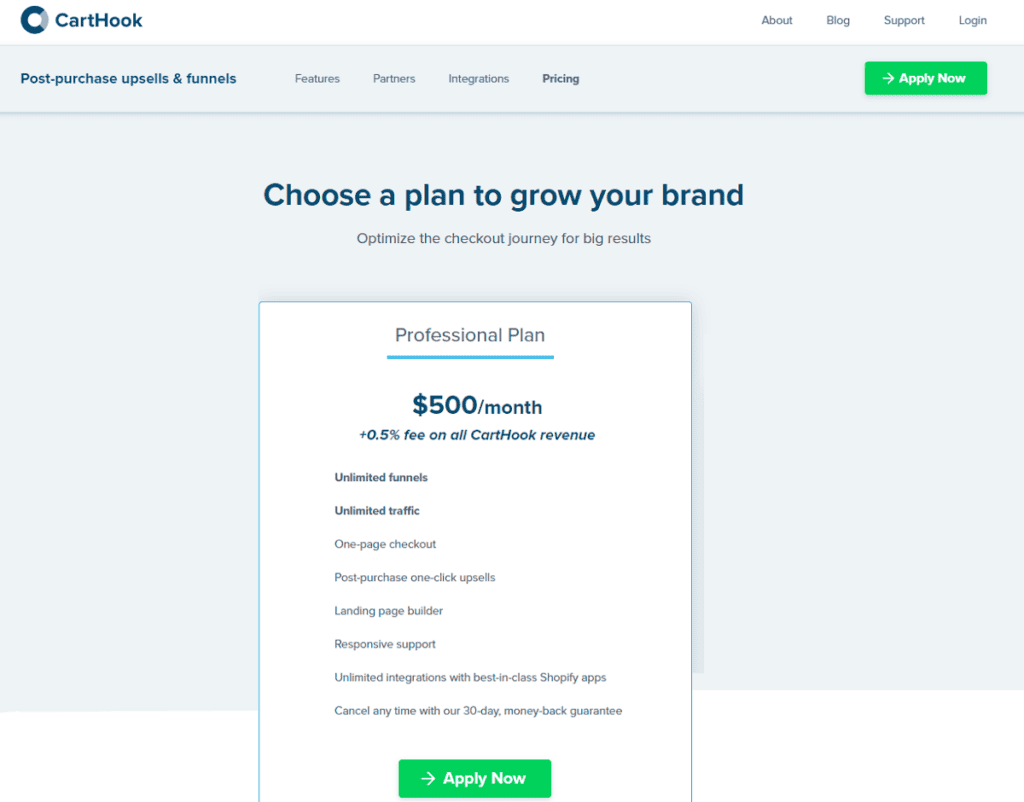
It is the most basic form of hybrid pricing, mixing just two models on a single plan.
Zendesk: Now for the truly complex, let’s take a look at Zendesk. The primary pricing model of Zendesk is different product bundles. They offer the two principal packages of “Support,” and “The Suite.”
And from there, each bundle has a different tier level with pay-per-user pricing.
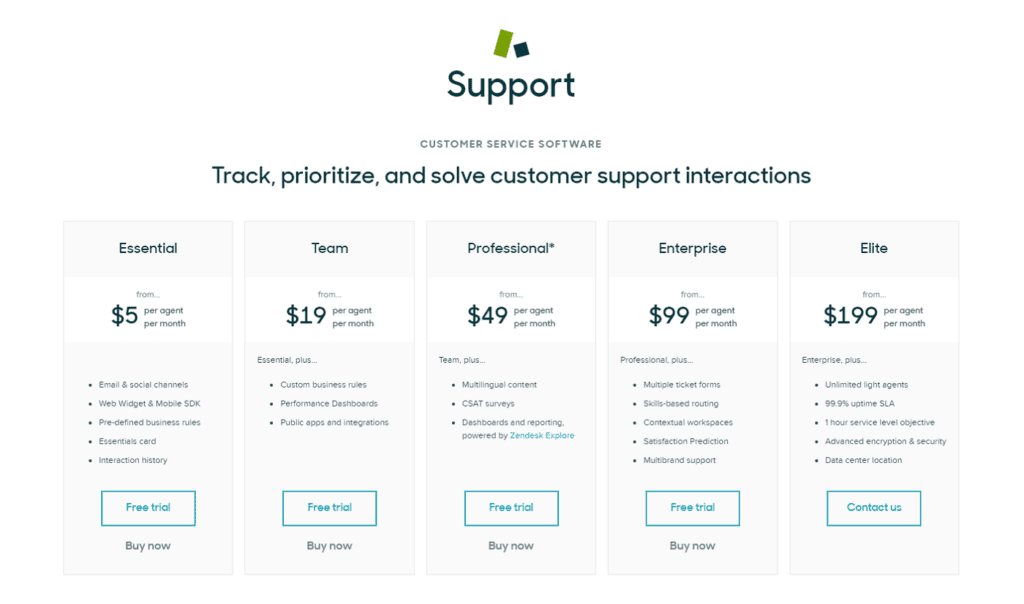
The essential plan starts with just email and social helpdesk, and the features get progressively more advanced as the tiers go on. (There is no usage-based pricing, however).
To top things off, Zendesk also offers à la carte or per-feature pricing for a number of their products:
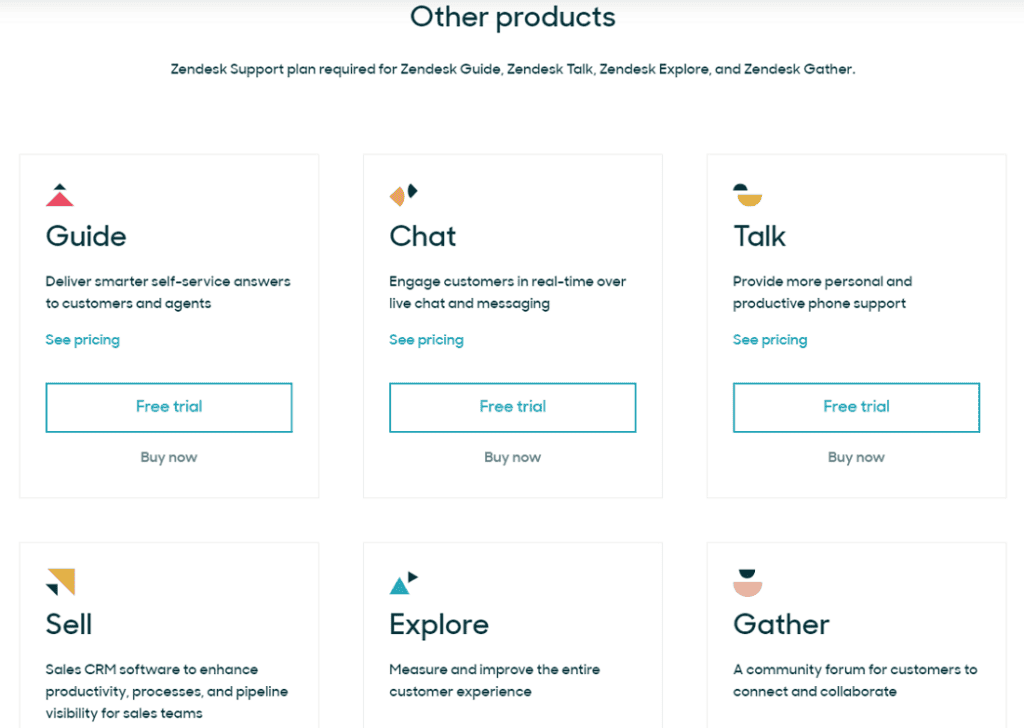
Again, each of these products is priced on a tiered & per-user basis.
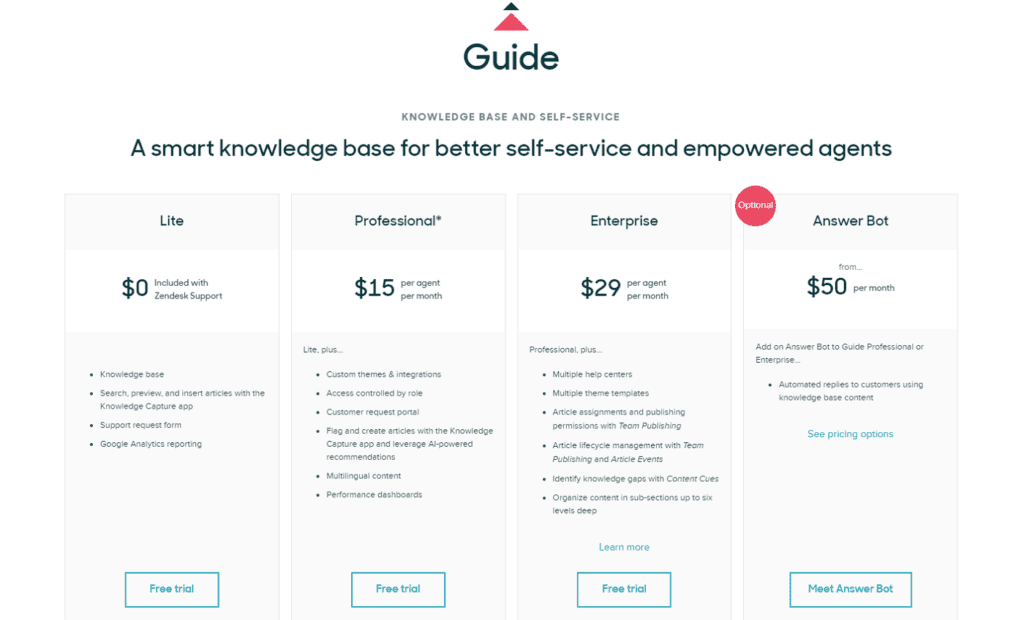
Some of the products follow an advanced freemium model where only users of Zendesks’s main product can use the free version.
When we said tiered solutions could be complicated, this is what we meant. Imagine trying to calculate the ongoing costs if you add a couple of products and have multiple users.
Applicable For:
If your company/product serves a wide variety of customers, from very small to very big, that have very different demands and usage patterns, your company could benefit from developing a hybrid model.
- Companies in payment processing/fulfillment/eCommerce industries that work closely with transactions.
- Companies where bandwidth usage is a significant expense, that also have a large amount of smaller/less active users that wouldn’t contribute significantly in a pure usage-based model.
- Companies that serve a very wide variety of target markets/personas.
How Do You Determine a Price For a SaaS Product?
While this topic deserves its own post, and we’ve written a comprehensive one, this section will provide a quick overview of the main sources of insight for SaaS product pricing.
Competitive Research
While it’s easy to over-complicate competitive analysis, it’s all about answering a few simple questions.
- How are your competitors pricing similar products to yours?
- What strategies are the market leaders following?
- Are upstarts doing anything innovative or different?
Once you have answered them, don’t just copy your competitors’ answers like it’s a high school test. Use your understanding of the current market to develop a suitable strategy for your product.
Interview Existing/Prospective Customers
Before you can even think about value-based pricing, you need to understand your customers and what your product can do for them at a deep level. Ask the following questions:
- What problems do you use our product to solve?
- How much do those problems cost your business per month/year?
- How much value are you getting from our product?
- Do you prefer predictable monthly/annual invoices or paying only for what you use?
- Are there any features you would like to see in our product?
When doing market research and talking to prospective customers, you obviously can’t ask them directly about their experience(unless they are using competing products), but you can ask similar questions.
- What does (problem your product can solve) cost your business per month/year?
- What is your (company’s) software/SaaS budget?
- What features do you look for in a SaaS product/product like ours?
- Do you prefer predictable monthly/annual invoices, or paying only for what you use?
Pricing is not a separate entity from your product. Through market research, you can identify the right package of features and price points that could work.
Run A/B Tests
Once you’ve started to theorize that a few different pricing models could work, you should put your options to the test. You can create different pricing pages and run split tests to figure out which ones work best.
An A/B test is the equivalent of doing market research on your website visitors. What models will actually convert visitors to customers? You can’t know for sure without testing.
Read more about how to structure your SaaS pricing for growth.
What Factors Affect Pricing?
When you’re doing pricing research, there are a number of different factors to consider. We cover the six most important ones below.
- Overhead/running costs. What does it cost, on average, to acquire a single customer, and provide the product/support to them?
- Product demand. Is there an urgent, unmet need for your product? Are there alternatives on the market?
- Customer expectations/competition. What are customers currently paying for competing/similar products?
- Customer spending power. How much can your ideal customers afford to pay for your product?
- Perceived value. How much is your product conceivably worth to your customers? (How much does your product save them through solved problems/increased efficiency?)
- Company goals/priorities. Is your goal to acquire/onboard as many customers in the short term? Do you want to increase long-term MRR through a balanced pricing strategy?
Reduce Churn With Annual Plans
Regardless of which subscription model you choose, you will most likely focus on monthly plans, rather than annual.
However, adding annual plans to the mix could, and should, be an integral part of your retention strategies.
According to a study by ProfitWell, companies with a higher percentage of annual contracts have significantly lower churn rates.
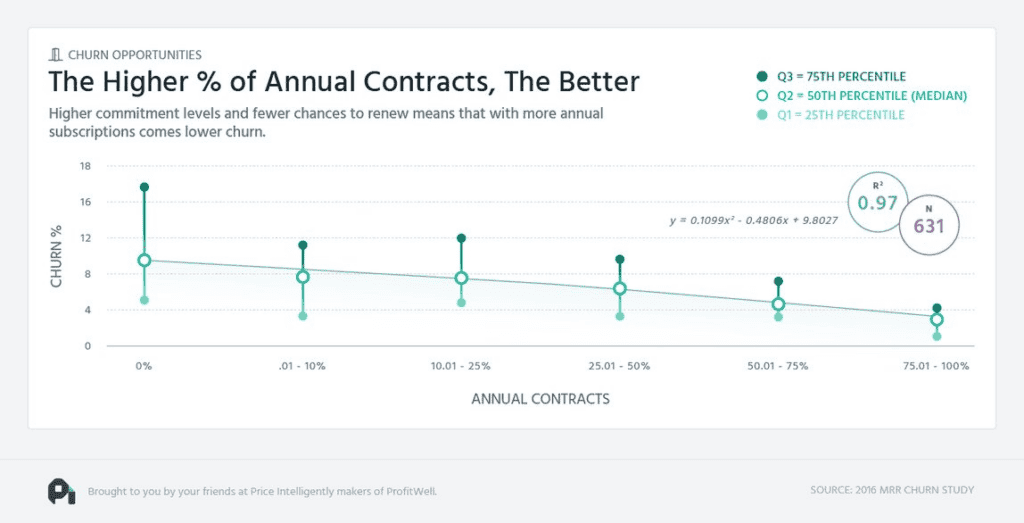
Companies with 75.01-100% annual contracts had an average churn rate of 3%, over 66% lower than those with no annual contracts at all (9%).
With a higher level of commitment, and a longer billing cycle with fewer prompts to pay or unsubscribe(once a year vs. ten), they tend to stay on for longer.
Not to mention, annual contracts help offset some of the cash flow problems early-stage SaaS companies often face.
Conclusion (Over One Million Possibilities for Any Pricing Scenario)
Without a trusted partner, complex pricing scenarios can be hard to tackle, especially if you have a varied customer base with different demands and expectations.
At Maxio, we have dozens of billing models you can easily customize based on your needs. In practice, this gives you unlimited ways to monetize your product/offer portfolio.
From freemium offers to drive traffic and increase adoption, to targeted promotions with unique pricing that gets locked in over time, we’ve got you covered.
We’ve got over a decade’s worth of experience handling billing for SaaS companies. We have discovered the pitfalls to avoid and the best approaches to implementing and making the most out of a new pricing policy.
To learn how Maxio can help your company, contact our SaaS billing experts today.
